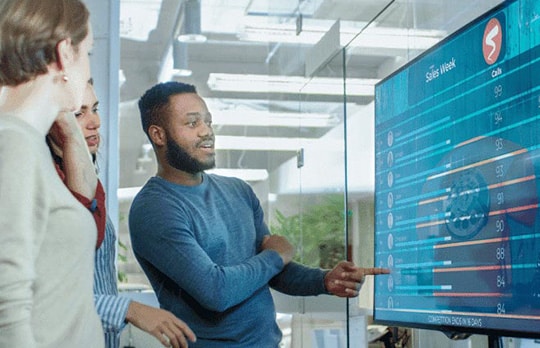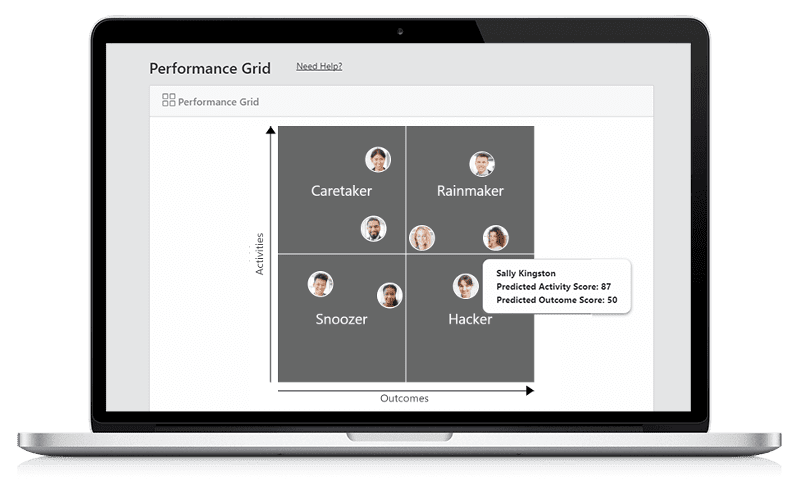In today’s fast-paced business environment, the best managers are not taskmasters—they are motivators. While micromanagement might deliver short-term results, it ultimately erodes trust, stifles autonomy, and crushes creativity within a team. The most effective leaders understand that true motivation comes from empowering their teams, fostering an environment of transparency, and consistently recognizing contributions. By striking the right balance of clear communication, thoughtful coaching, and leveraging powerful tools, managers can truly unlock their teams’ full potential and drive sustainable success. Let’s dive in and explore how.
Why Micromanagement Fails to Inspire
Micromanagement, at its core, is a symptom of a lack of trust. When managers constantly hover, scrutinize every detail, and dictate every step, they inadvertently send a powerful message: “I don’t trust you to do your job effectively.” This approach stifles initiative and severely damages morale, leading to a disengaged and demotivated workforce. A stark statistic from a study by Trinity Solutions reveals the depth of this issue: a staggering 69% of employees have considered changing jobs specifically because of micromanaging bosses. This is not merely an inconvenience; it’s a significant factor in employee turnover and a drain on organizational productivity.
When employees feel excessively controlled, their natural inclination to take ownership of their work and innovate is severely curbed. They become cogs in a machine rather than active contributors, focusing on fulfilling prescriptive instructions rather than creatively solving problems. The key to fostering a motivated and productive team lies in a fundamental shift from managing tasks to managing outcomes. By clearly defining desired results and empowering employees to determine the best path to achieve them, managers can unlock a wealth of untapped potential.
The Difference Between Management and Leadership
While the terms “management” and “leadership” are often used interchangeably, they represent distinct approaches to guiding a team. Managers who truly inspire do more than simply delegate responsibilities and ensure tasks are completed. They transcend the transactional aspects of their role and embrace a more transformative style. They guide their team members, providing the necessary support and resources. They mentor, offering advice, sharing knowledge, and helping individuals develop their skills and careers. Most importantly, they empower, entrusting employees with the authority and autonomy to make decisions and take ownership of their contributions.
Leadership, in this context, is about creating an environment where employees feel genuinely trusted to deliver results. It’s about cultivating a culture of psychological safety, a concept championed by companies like Google. Psychological safety is the belief that one can speak up, ask questions, take risks, and even make mistakes without fear of punishment or humiliation. When employees feel psychologically safe, they are more likely to experiment, collaborate openly, and bring their full selves to work, which are all hallmarks of high-performing teams.
Building Trust Through Transparency
Trust is not merely a desirable quality in the workplace; it is the fundamental cornerstone of sustained motivation and high performance. Without trust, communication breaks down, collaboration falters, and engagement wanes. A crucial element in building and maintaining this trust is transparency, particularly regarding goals and expectations. When employees have a clear understanding of the organization’s overarching mission and how their individual contributions directly support that mission, they feel a greater sense of purpose and belonging. This clarity helps them understand the “why” behind their work, transforming mundane tasks into meaningful contributions.
[image – Spinify Dashboards]
Modern tools can play a significant role in fostering this transparency. For example, platforms like Spinify, with their real-time dashboards, make performance data visible and accessible to everyone. This open display of progress and achievements ensures clarity without the need for constant, intrusive oversight. When employees can see their own performance, and the performance of their team, in an objective and immediate way, it eliminates ambiguity, builds confidence, and reinforces the link between effort and outcome.
Encouraging Autonomy and Ownership
One of the most powerful drivers of intrinsic motivation is autonomy. When team members are given the freedom and flexibility to make decisions about their work, to choose how they approach tasks, and to manage their own time, they feel a deep sense of ownership. This ownership is not just about accountability; it’s about a genuine personal investment in the success of their projects and the organization as a whole. When individuals feel ownership, they naturally want to excel, striving for higher quality, greater efficiency, and more innovative solutions.
Empowering employees with autonomy cultivates a sense of responsibility and self-direction. It shifts the focus from external pressure and supervision to internal drive and self-management. Spinify, for instance, exemplifies this principle by allowing sales representatives to track their own progress toward goals. This self-monitoring capability creates a powerful form of accountability that is internal and self-driven, rather than externally imposed. When individuals can clearly see their own trajectory and are empowered to adjust their strategies to meet their targets, they become active participants in their own success, fostering a culture of genuine motivation and sustained high performance.
Setting Clear Expectations Without Hovering

The foundation of employee empowerment is crystal-clear communication regarding expectations. When employees understand what is required of them, they are better equipped to determine the most effective path to achieve those goals. Clarity, however, is not synonymous with control. Managers should define measurable, achievable goals and then provide the autonomy for employees to navigate their own journey towards success. This “hands-off, but not absent” approach demonstrates trust and encourages ownership.
Practical Application: Implement tools that visualize targets and progress transparently. Platforms like Spinify, for instance, are invaluable in this regard. By displaying key performance indicators (KPIs) and individual or team progress in an easily digestible format, Spinify ensures everyone is aligned with objectives without the need for constant supervision. Employees can track their own performance, understand their impact, and identify areas where they might need to adjust their approach, all within a self-directed framework. This proactive visibility significantly reduces the need for a manager to constantly check in, allowing employees to manage their own workflows and timelines more effectively.
Providing Constructive Feedback Regularly
Feedback is a powerful tool for growth and development, but its delivery is paramount. It should empower, rather than intimidate or discourage. Regular, specific, and supportive feedback builds confidence, reinforces positive behaviors, and helps to keep performance on track. This isn’t about pointing out flaws, but rather identifying opportunities for improvement and celebrating successes. The goal is to create a continuous feedback loop that fosters a culture of learning and development.
Practical Application: Leverage performance analytics to inform your feedback. Spinify’s real-time performance analytics provide managers with objective data on employee progress and achievements. This data allows for highly specific and timely coaching opportunities. For example, if an employee is consistently excelling in a particular area, the manager can use this data to celebrate their success publicly and analyze what strategies are working well. Conversely, if an employee is struggling, the analytics can pinpoint the exact areas requiring attention, enabling the manager to offer targeted support and training without making the employee feel singled out or scrutinized. This data-driven approach to feedback makes conversations more objective, constructive, and impactful.
Fostering a Culture of Recognition
One of the most powerful drivers of employee motivation is genuine acknowledgment for their efforts. Employees crave recognition, not just for achieving major milestones, but also for their consistent hard work and contributions. Recognition programs are not merely a nice-to-have; they are proven to significantly increase employee engagement, boost morale, and improve retention rates. When employees feel seen and appreciated, they are more likely to be invested in their work and loyal to their organization.

Practical Application: Integrate recognition into the daily workflow through gamified systems. Spinify’s gamified leaderboards and achievement badges make recognition a continuous and engaging part of the workday. By celebrating small wins and showcasing achievements publicly, these features transform individual efforts into a collective triumph. For instance, an employee who reaches a specific sales target might see their name highlighted on a leaderboard, or receive a virtual badge. This public acknowledgment not only motivates the individual but also inspires friendly competition and encourages others to strive for similar achievements. This constant stream of positive reinforcement creates a vibrant and appreciative work environment where hard work is consistently celebrated, driving significant results over time.
Encouraging Peer-to-Peer Motivation
Motivation doesn’t solely have to originate from the top of the organizational hierarchy. A truly empowered workplace fosters a culture where employees feel comfortable and encouraged to recognize and support one another. This peer-to-peer motivation builds a strong sense of community, reinforces team cohesion, and cultivates a shared sense of accountability. When colleagues actively cheer each other on, it creates a positive ripple effect that elevates the entire team.
Practical Application: Implement social recognition features that allow teams to publicly acknowledge each other’s achievements. Spinify’s social recognition functionalities enable employees to easily give shout-outs, kudos, and virtual high-fives to their colleagues. For example, after a successful team project, individual team members can post messages of appreciation for specific contributions, highlighting their teammates’ efforts and successes. This not only makes individual achievements more visible within the team but also strengthens interpersonal bonds and encourages a collaborative spirit. By decentralizing recognition, managers empower their teams to build a supportive and encouraging environment where everyone feels valued and motivated by their peers, leading to increased overall team performance and job satisfaction.
Avoiding Micromanagement Through Data-Driven Leadership
Micromanagement stems from a lack of trust and an urge for control, often leading to decreased employee morale and productivity. A far more effective approach is data-driven management, which eliminates the need for constant oversight by providing objective insights into performance. By leveraging clear, quantifiable metrics, managers can shift their focus from intrusive check-ins to strategic coaching and development.
[image – Spinify Insights]
Tools like Spinify, with its AI-driven insights, exemplify this by highlighting areas that require attention without requiring managers to constantly hover over their teams. This not only fosters a sense of autonomy among employees but also allows managers to allocate their time and energy more efficiently, focusing on growth opportunities rather than policing every action. Ultimately, data empowers teams to self-manage and managers to lead with confidence, knowing exactly where support is needed.
The Indispensable Role of Communication in Fostering Motivation
Effective communication is the bedrock of a motivated and high-performing team. It’s about fostering understanding and connection, not exerting control. Regular team meetings serve as crucial platforms for discussing progress, addressing challenges, and aligning on goals, ensuring everyone is on the same page. Equally important are one-on-one check-ins, which provide personalized opportunities for managers to offer constructive feedback, acknowledge achievements, and listen to individual concerns.
This open dialogue builds trust, strengthens relationships, and ensures that potential issues are addressed proactively rather than spiraling into larger problems that might tempt managers to micromanage. When employees feel heard and valued, they are more engaged, more committed, and less likely to require constant supervision, creating an environment where motivation thrives naturally.
Encouraging Continuous Learning and Professional Growth
Empowering teams to continuously learn and develop is a powerful antidote to micromanagement. By investing in professional development and upskilling opportunities, organizations signal their trust in employees’ potential and their commitment to their long-term growth. This not only enhances individual capabilities but also fosters a culture of innovation and adaptability. Companies like Microsoft, for instance, champion a “growth mindset,” where continuous learning and embracing challenges are celebrated.
This approach encourages employees to take ownership of their development, explore new skills, and contribute more meaningfully to the organization, reducing the perceived need for managers to dictate every step. When employees are given the tools and opportunities to expand their knowledge and expertise, they become more self-sufficient and proactive, further diminishing the impulse to micromanage.
Leading With Empathy and Emotional Intelligence
At its core, leadership is about inspiring and guiding, not enforcing and dictating. Empathy and emotional intelligence are critical attributes for managers who seek to motivate without resorting to micromanagement. Empathy allows leaders to genuinely understand the unique challenges, aspirations, and perspectives of their team members. This understanding enables them to adapt their leadership style to meet individual needs, offering support and flexibility where required. Emotional intelligence, on the other hand, provides leaders with the ability to perceive and manage their own emotions and those of others.
This translates into more effective communication, stronger team cohesion, and the capacity to inspire commitment and loyalty rather than simply demanding compliance. When leaders demonstrate genuine care and emotional awareness, they build deeper connections, fostering an environment where employees feel understood, respected, and intrinsically motivated to perform at their best, negating the very need for intrusive oversight.
Creating Healthy Competition

Healthy competition is a powerful catalyst for motivation. When implemented thoughtfully, it can transform a team’s approach to achieving goals, turning individual tasks into shared victories. Spinify leverages this principle by offering gamified challenges and contests, which are designed to inject excitement and a sense of playful rivalry into the pursuit of objectives. These aren’t just about winning; they’re about fostering an environment where team members push their own boundaries, learn from each other, and celebrate collective progress.
The key lies in creating a supportive atmosphere where competition elevates performance without breeding animosity. By showcasing individual and team achievements in real-time, Spinify helps managers cultivate a culture where everyone strives for excellence, knowing their efforts contribute to a larger success story.
Promoting Collaboration Over Control
Micromanagement, by its very nature, creates silos. It stifles individual initiative and prevents the free flow of ideas, ultimately isolating employees. In stark contrast, collaboration is a unifying force that strengthens teams and ignites motivation. Great leaders understand that the sum of individual contributions is far greater when those contributions are interconnected and celebrated collectively.
Encouraging teams to actively share their insights, collectively tackle challenges, and jointly rejoice in their accomplishments fosters an environment where intrinsic motivation flourishes. When employees feel their voices are heard and their contributions are valued as part of a collective effort, they are more likely to be engaged, invested, and driven to succeed.
Focusing on Outcomes, Not Activity
One of the most detrimental habits of micromanagers is their preoccupation with the minute details of how tasks are performed. This “process policing” often overshadows the actual results. Effective leaders, however, shift their focus to outcomes. They trust their teams to find the most efficient and effective ways to achieve desired results, prioritizing the end goal over the specific steps taken to get there.
[image – Spinify Performance Grids]

Spinify’s performance grids are an invaluable tool in this regard. They provide managers with a crystal-clear, real-time overview of key outcomes, enabling them to measure success based on tangible results rather than getting bogged down in overseeing every single activity. This approach empowers employees to take ownership of their work, fostering a sense of autonomy and accountability that fuels motivation.
Balancing Accountability and Freedom
While employees undeniably benefit from structure and clear expectations, excessive control can be suffocating and counterproductive. The art of effective leadership lies in finding the delicate balance between accountability and autonomy. This means providing team members with the necessary framework and guidelines to align with business objectives, while simultaneously granting them the freedom and space to innovate, experiment, and develop their own solutions.
Spinify plays a crucial role in maintaining this equilibrium by offering real-time visibility into team progress. This allows leaders to monitor outcomes and ensure alignment without resorting to micromanagement. By trusting their teams with both responsibility and the freedom to navigate their work, managers cultivate an environment where creativity thrives and employees feel empowered to contribute their best.
Recognizing Effort and Growth, Not Just Results
Motivation is not solely built on achieving immediate results; it’s also deeply rooted in the recognition of effort, progress, and continuous growth. While celebrating big wins is important, acknowledging the journey and the incremental improvements along the way builds more sustainable and long-term motivation. Spinify’s customizable metrics are designed to make this recognition easy and impactful.

By allowing managers to track and celebrate not only performance but also individual effort, skill development, and persistence, Spinify helps to reinforce a growth mindset within teams. This approach encourages employees to embrace challenges, learn from setbacks, and continually strive for improvement, knowing that their dedication and development are valued.
Leading by Example
The most powerful form of motivation comes from within, often ignited by the actions and attitudes of those in leadership positions. Motivated teams are, in many ways, a reflection of their motivated leaders. Managers who consistently demonstrate enthusiasm for their work, resilience in the face of challenges, and unwavering commitment to their goals naturally inspire these same qualities in their teams.
Leadership is not just about giving directives; it’s about modeling the behaviors, values, and positive attitudes that you wish to see in your employees. By embodying the very drive and dedication they seek to cultivate, leaders create a ripple effect that energizes and empowers their entire team to perform at their highest potential.
Empower, Don’t Overpower
Ultimately, fostering a motivated team hinges on building trust, recognizing contributions, and empowering individuals to take ownership of their work. The outdated practice of micromanagement stifles creativity and demotivates employees. Instead, contemporary leaders leverage innovative tools like Spinify to offer clear visibility into progress, provide timely and constructive feedback, and celebrate milestones, all while granting their team the autonomy needed to thrive.
By striking a harmonious balance between freedom and responsibility, managers can cultivate an environment where self-driven success is the norm. Try Spinify today and revolutionize how you inspire your team—through genuine motivation, not intrusive micromanagement.



